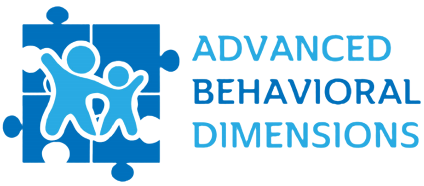Table of Contents
| Understanding Autism and Social Challenges |
| The Importance of Early Social Skills Intervention |
| Core Components of Social Skills Training |
| Parent-Led Strategies for Social Development |
| Communication Skill Enhancement Techniques |
| Interpreting Non-Verbal Social Cues |
| Building Emotional Intelligence |
| Peer Interaction and Group Learning |
| Technology and Social Skills Training |
| Overcoming Common Social Interaction Barriers |
| Celebrating Progress and Individual Strengths |
| Professional Support and Resources |
Introduction
Imagine social interactions as a complex dance where everyone seems to know the steps except your child. For many children with autism, navigating social landscapes can feel overwhelming and confusing. But what if we could provide them with a roadmap to understand and engage in this intricate social choreography?
Social skills training offers precisely that—a structured, compassionate approach to helping children with autism develop the communication and interaction abilities that many neurotypical children acquire naturally. This article explores how targeted interventions can transform social challenges into opportunities for growth and connection.
Understanding Autism and Social Challenges
Autism Spectrum Disorder (ASD) presents unique social interaction difficulties. Children with autism often struggle with:
- Reading facial expressions
- Understanding subtle social nuances
- Maintaining conversational flow
- Interpreting non-verbal communication
These challenges aren’t indicators of less intelligence, but different neural wiring that requires specialized support and understanding.
The Importance of Early Social Skills Intervention
Early intervention is crucial. Like learning a language, social skills are most effectively developed during childhood when neural plasticity is highest. By introducing structured social skills training early, we can help children with autism:
- Build confidence
- Reduce social anxiety
- Develop meaningful relationships
- Enhance academic and personal potential
Core Components of Social Skills Training
Effective social skills training typically includes:
- Explicit Teaching: Breaking down complex social interactions into manageable steps
- Role-Playing: Practicing scenarios in safe, controlled environments
- Positive Reinforcement: Celebrating small victories and progress
- Individualized Approaches: Tailoring strategies to each child’s unique strengths
Parent-Led Strategies for Social Development
Parents play a transformative role in social skills development. Key strategies include:
- Modeling appropriate social behaviors
- Creating low-pressure social opportunities
- Using visual aids and social stories
- Practicing active listening and validation
Communication Skill Enhancement Techniques
Communication techniques can include:
- Turn-taking games
- Conversation starter prompts
- Emotion recognition activities
- Active listening exercises
Interpreting Non-Verbal Social Cues
Non-verbal communication is like a silent language. Training can help children understand:
- Facial expressions
- Body language
- Tone of voice
- Personal space boundaries
Building Emotional Intelligence
Emotional intelligence involves recognizing and managing emotions. Training focuses on:
- Identifying personal emotions
- Understanding others’ feelings
- Developing empathy
- Regulating emotional responses
Peer Interaction and Group Learning
Group settings provide valuable real-world social practice. Structured group activities can help children:
- Practice social skills
- Build friendships
- Learn from peers
- Develop collaboration abilities
Technology and Social Skills Training
Modern technology offers innovative training tools:
- Interactive apps
- Virtual reality simulations
- Video modeling
- Online social skills programs
Overcoming Common Social Interaction Barriers
Common barriers include:
- Sensory overwhelm
- Communication differences
- Anxiety
- Misunderstanding social expectations
Celebrating Progress and Individual Strengths
Every child’s journey is unique. Celebrate:
- Small improvements
- Individual talents
- Personal achievements
- Resilience
Professional Support and Resources
Professional support can provide:
- Specialized therapies
- Educational strategies
- Counseling
- Community resources
Conclusion
Social skills training isn’t about changing who a child is—it’s about empowering them to connect, communicate, and confidently navigate their social world. With patience, understanding, and targeted support, children with autism can develop robust social abilities that highlight their incredible potential.
Frequently Asked Questions
- What age is best to start social skills training? Ideally, between 2-6 years old, but benefits can be seen at any age.
- How long does social skills training typically take? Progress varies, but consistent training can show improvements within 6-12 months.
- Can social skills training help with school performance? Yes, improved social skills often correlate with better academic engagement and performance.
- Are online social skills programs effective? They can be helpful supplements, but should not replace in-person, personalized training.
How can parents support social skills training at home? Through consistent practice, positive reinforcement, and creating supportive, low-pressure social environments.





